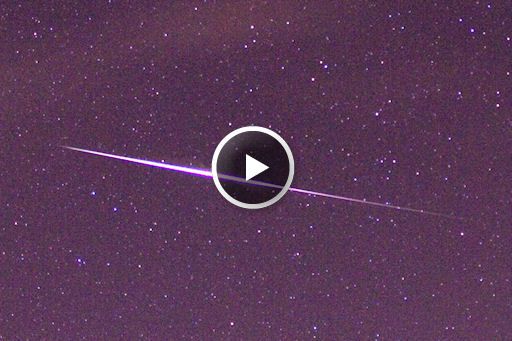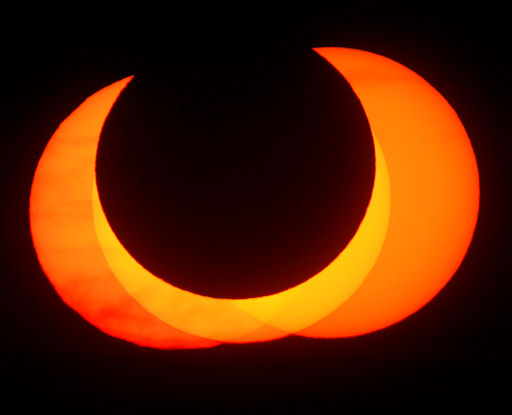Metallic photos of the sun by renowned photographer Greg Piepol bring together the best of art and science. Buy one or a whole set. They make a stellar gift. | | |
AURORA WATCH: NOAA forecasters estimate a 20%-25% chance of geomagnetic storms on Jan. 7-8 when a solar wind stream is expected to hit Earth's magnetic field. High-latitude sky watchers should be alert for auroras.
EXPLODING COMET FRAGMENTS: According to counts from around the world, the Quadrantid meteor shower peaked during the early hours of Jan. 4th with nearly 100 shooting stars per hour. The source of the Quadrantids is shattered comet 2003 EH1. During the peak, Mike Hankey watched a fragment explode just above his home in Freeland, Maryland:

"Here's a video of a Quadrantid fireball and the smoke trail it left behind," says Hankey. "It took 10 minutes for the trail to dissipate." The fireball itself produced a magnitude -9 flash, about ten times brighter than Venus.
Observers say most Quadrantids were faint, but the shower was spiced by occasional fireballs such as the one Hankey recorded. Browse the gallery for more exploding fragments:
NEW: 2011 Quadrantid Meteor Gallery
[international meteor counts] [meteor text alerts]
LUNAR SILHOUETTE: Seeing an all-black New Moon is tricky business. On Tuesday morning, Peter Rosén of Stockholm, Sweden, did it with a little help from the sun:

"I combined 3 pictures of Jan. 4th partial solar eclipse to create a portrait of the transiting moon," explains Rosén. "Not much is missing. The middle picture shows the eclipse at 85%, just a little less than the theoretical maximum of 86% visible to the north of Sweden."
Another composite photo by Rosén shows the big wide world around the eclipse. "It was a beautiful morning in Stockholm," he says. Stay tuned for more images as gallery updates continue.
Solar Eclipse Photo Gallery
December 2010 Aurora Gallery
[2010 Recap: Jan, Feb, Mar, Apr, May, Jun, Jul, Aug, Sept, Oct, Nov, Dec]
Lunar Eclipse Photo Gallery
[NASA: "Solstice Lunar Eclipse"] [astronomy alerts]
Potentially Hazardous Asteroids (
PHAs) are space rocks larger than approximately 100m that can come closer to Earth than 0.05 AU. None of the known PHAs is on a collision course with our planet, although astronomers are finding
new ones all the time.
On January 6, 2011 there were 1167 potentially hazardous asteroids.
Notes: LD means "Lunar Distance." 1 LD = 384,401 km, the distance between Earth and the Moon. 1 LD also equals 0.00256 AU. MAG is the visual magnitude of the asteroid on the date of closest approach. | | The official U.S. government space weather bureau |
| | The first place to look for information about sundogs, pillars, rainbows and related phenomena. |
| | Researchers call it a "Hubble for the sun." SDO is the most advanced solar observatory ever. |
| | 3D views of the sun from NASA's Solar and Terrestrial Relations Observatory |
| | Realtime and archival images of the Sun from SOHO. |
| | from the NOAA Space Environment Center |
| | the underlying science of space weather |

